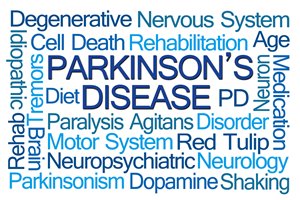 Sometimes people with Parkinson’s disease (PD) experience cramps or spasms that last for a prolonged period of time in various parts of the body. In fact, for some people, the first Parkinson’s symptom they experience may be severe cramping in the feet. This condition is called dystonia and it can be extremely painful and difficult to live with.
Sometimes people with Parkinson’s disease (PD) experience cramps or spasms that last for a prolonged period of time in various parts of the body. In fact, for some people, the first Parkinson’s symptom they experience may be severe cramping in the feet. This condition is called dystonia and it can be extremely painful and difficult to live with. Causes of Dystonia
Doctors aren’t certain what causes dystonia, but it may be related to dysfunction in the basal ganglia, a part of the brain that is affected by PD. It occurs more often in PD patients who have a mutation in a certain gene, called the Parkin gene. It can also be a side effect of levodopa, a medication used in treating PD. About 40 percent of people with PD experience dystonia.
Dystonia Symptoms
The main symptom of dystonia is painful cramping, twisting, and spasming in the muscles. For people with PD, dystonia most often affects the feet. It may cause the toes to curl and remain clenched. Cramps in the foot usually happen when the person is walking or running. They may experience cramping only on the side of the body that is more severely affected by PD.
Dystonia can also affect other parts of the body in various ways, such as:
- The neck may twist in a way that causes the person’s head to tilt downward or to one side.
- Extremities may have spasms or move involuntarily.
- The muscles involved in swallowing and the vocal cords may be affected so that the person’s voice sounds
- strangled or breathy.
- Muscles around the eyes may cause the person to blink too often or to have trouble opening their eyes.
- Facial muscles may cause the jaw to close or open with force or make the person’s face look as though they are grimacing.
Dystonia may be one of the most difficult symptoms of PD to live with because of the pain it causes. Living with severe pain can be both physically and emotionally exhausting. Some things that may help your parent to live more comfortably with dystonia include:
- Talk to your parent’s doctor. Adjusting current medications can help. There are also other medications and treatments that can help ease the pain.
- Help your parent to connect with other people who have PD. Find a local support group or an online group where your parent can talk about the disease and their feelings with other people who will understand.
- Encourage your parent to stay involved in things they enjoy, such as social groups and activities. However, they may need to pace themselves to avoid making symptoms worse.
- Try to help your parent live a healthy lifestyle including physical activity, a balanced diet, and plenty of rest.
Sources
http://www.pdf.org/dystonia
https://www.michaeljfox.org/understanding-parkinsons/living-with-pd/topic.php?dystonia
http://www.dystonia-parkinsons.org/what-is-dystonia
IF YOU OR AN AGING LOVED-ONE ARE CONSIDERING HIRING IN-HOME ELDER CARE IN CHICAGO, IL, PLEASE CONTACT THE CARING STAFF AT BRIGHTSTAR CARE CHICAGO. CALL TODAY: 312.382.8888.

